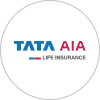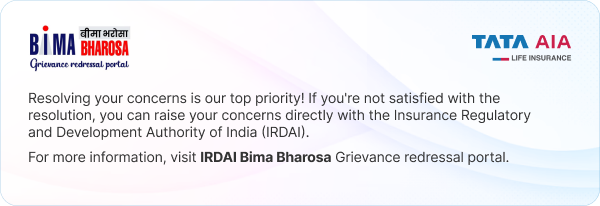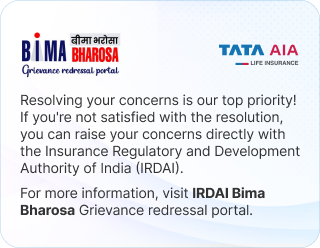The Employer Employee Insurance Scheme is a life insurance policy purchased by employers for their employees. It provides financial protection through various coverage options to employees and their families in case of the employee’s untimely death. This scheme strengthens employee-employer relationships, helps in retention, and facilitates workforce development. The scheme also provides tax8 benefits for both employers and employees. This blog explains what is employer employee insurance.
What is employer employee insurance?
Employer-employee insurance is a policy offering financial protection provided by employers to their employees. It is also called group insurance and offers essential coverage, including life, health, and disability benefits, for employees and, in some cases, their family members.
This insurance helps ensure employees have access to crucial protection at a cost-effective rate. It may cover medical emergencies, hospitalisation, accidents, and other specified benefits, while also supporting employee retention and workforce stability.
What is the employer-employee insurance scheme?
An Employer-Employee Insurance Scheme is purchased by an employer to provide life insurance coverage for its employees. The policy is owned by the employer, who pays the premiums, while the employee is the beneficiary of the coverage.
This scheme helps an employer ensure the social security of their employees and reduces the employee attrition rate. The premiums paid under the scheme are considered business expenses and may be eligible for tax benefits, subject to applicable tax laws.
What are the eligibility criteria for employer-employee insurance?
Both employers and employees must meet specific eligibility criteria to qualify for the Employer Employee Insurance Scheme. The eligibility parameters help ensure that the policy applies only to genuine employer-employee relationships.
Employer eligibility
The employer needs to meet the following eligibility criteria.
- Any registered business entity, such as a sole proprietorship, partnership firm, or company, can purchase this insurance.
- The organisation should have a minimum of five salaried employees.
- The employer must maintain a financial relationship by paying regular salaries to its employees.
Employee eligibility
The eligibility criteria for employees are as follows:
- Employees must be legally employed and between 18 and 60 years of age.
- They should have a valid employment contract and receive monthly remuneration for their services.
- The scheme may also extend coverage to dependent family members, such as spouses, children, or parents, based on policy terms.
What are the benefits of the employer-employee insurance scheme?
The employer-employee insurance scheme provides various advantages for both employers and employees.
Benefits for the employer
The employer-employee insurance scheme offers the following key benefits for employers:
- Employee retention: By providing coverage, employers enhance employee loyalty and reduce attrition, helping maintain workforce stability.
- Talent acquisition: Offering insurance benefits helps the organisation hire skilled and talented professionals seeking employment.
- Improved workplace relations: Providing insurance coverage reflects the employer’s commitment to employee welfare, strengthening trust and reputation.
- Business expense deduction: Premiums paid for employer-employee insurance schemes are typically considered deductible* business expenses under Section 37(1) of the Income Tax Act, 1961, subject to applicable tax laws.
- Enhanced productivity: Employees with financial protection can focus on work more effectively, supporting overall organisational performance.
- Health awareness: Employer-sponsored plans encourage preventive care, supporting a healthier workforce.
Benefits for the employees
The employer-employee insurance scheme offers several key benefits for employees:
- Financial protection: Employees and their families receive support in case of medical emergencies, accidents, or untimely death, covering hospitalisation and related expenses without additional cost.
- *Tax benefits: If employees pay the insurance premium, they can claim deductions* under Section 80C of the Income Tax Act. The maturity or death benefits are generally *tax-exempt under Section 10D, subject to applicable laws.
- Improved health and wellness: Employer-sponsored insurance encourages employees to prioritise their health and seek preventive care. Many plans also provide wellness benefits like access to fitness tracking apps, discounts on medicines, and other services that promote a healthier lifestyle.
- Increased job satisfaction: Employer-sponsored insurance provides employees with security and support, improving their commitment and overall satisfaction.
Structure of employer employee insurance
Employer-employee insurance schemes can be structured in two main ways. They include:
Type A structure
- Employer as proposer: The employer acts as a proposer, while the employee’s life is insured.
- Completion of proposal form: Detailed proposal forms must be filled out by the employer.
- Policy assignment: The policy is assigned to the employee for a minimum period to prevent misuse such as surrendering the policy or taking loans.
- Employer-imposed conditions: The employer can specify restrictions and objectives of insurance through a separate letter.
- Financial disclosure: As premiums are paid by the company, the organisation must disclose profitability with IT records for the last three years.
- *Tax benefits: The organisation may continue to avail of *tax benefits after the predefined ownership period.
- Employee departure: If an employee leaves, the plan can be surrendered or assigned to the employee as a concluding benefit.
Type B structure
- Employee as proposer: The employee is both the proposer and the insured.
- Proposal form submission: A suitable proposal form must be filled out and submitted by the employee.
- No policy assignment needed: Since both employer and employee are involved, policy assignment is not required.
The primary difference is that in Type A, the employer acts as the proposer, and policy assignment is mandatory. In Type B, the employee acts as the proposer, and policy assignment is not needed.
How is an employer-employee insurance policy different from a keyman insurance policy?
It is quite common to get confused between an Employer-Employee Insurance policy and a Keyman Insurance Policy. Although both seem similar, they are completely different from each other. A Keyman Insurance policy is a term life insurance policy wherein the death benefits are paid to the employer and attract income tax.
On the other hand, the Employer-Employee Insurance scheme is an arrangement where the policy benefits are paid directly to the employees after the policy is assigned to the employee (insured person).
Conclusion
The employer-employee insurance scheme enables employers to provide financial protection to their workforce. It indicates a company’s commitment to employee welfare while also offering tax advantages* and supporting employee retention. Ensuring financial security for employees and their families contributes to a responsible and stable workplace environment. Organisations seeking to support their employees’ long-term security can buy this insurance after understanding its legal and financial aspects.











 FOR EXISTING POLICY
FOR EXISTING POLICY 
 FOR NEW POLICY
FOR NEW POLICY 








